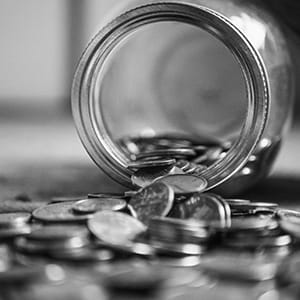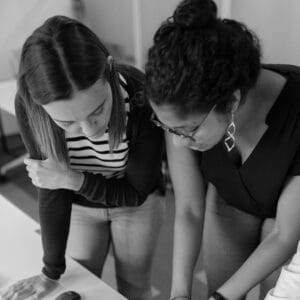Financial Capability After High School
HIGHLIGHTS
- High school students report receiving insufficient training for managing their personal finances
- Providing resources and coaching can help offset financial disparities that affect educational outcomes
- Designing programs with behavioral insights helps students gain new knowledge and apply it in real life
The Challenge
Financial disparities among families meaningfully impact educational outcomes. Students from lower-income families graduate high school, attend college, and complete their degrees at significantly lower rates than students from higher-income families.
Oakland Promise is an organization that seeks to offset the financial disparities between families that affect students, empowering children in Oakland to thrive in their higher education and career goals. A crucial moment in which students from lower-income households are at a particular disadvantage is during the transition between high school and adulthood, when they begin navigating potentially new financial responsibilities. That’s why Oakland Promise and ideas42 partnered to co-design a financial capability program for high school students informed by behavioral science.
Our Approach
We worked with the Oakland Promise team, Oakland Unified School District (OUSD) students, educators, and administrators, as well as various local stakeholders, to co-design a pilot program specifically to help students learn information and skills and put what they learn into practice. We then refined the ideas and user-tested prototypes with OUSD students, who themselves contributed some of the most valuable characteristics of the program design (including the name, “Outta Pocket”).
A virtual pilot of the “Outta Pocket” program took place with a small group of seniors in the Fall of 2020 at Castlemont High School in Oakland, with five sessions of activities that helped them to:
- Set financial goals: Setting a goal helps to direct effort and improve performance, increasing the likelihood of achieving it.
- Understand their current saving and spending habits: Leveraging a user-friendly saving and budgeting software from community-based organization MyPath, students record their own spending habits and visualize how adjusting their behaviors can help them make progress toward their future goals.
- Create a plan for the future: By reviewing their own spending history, students identify saving strategies that offer concrete next steps personalized to their unique context. At the end of the program, students walk away with a plan, including a financial goal and steps to make progress in realizing it.
Results
Students reviewed Outta Pocket positively in post-surveys and qualitative interviews, and most importantly, they showed early signs of improved financial confidence and knowledge. In our endline survey, based on the CFPB Youth Financial Capability Survey administered two weeks after the pilot ended, students reported increased levels of financial confidence and support, knowledge about common financial tools, and ability to save money and mitigate unnecessary spending.
To learn more about the behavioral elements of the program and results, read the project brief.
Takeaway
While early signs of impact are encouraging, the next step is to test the program with a greater number of students, and in a more stable educational context (the pilot program was run during a pandemic plagued by uncertainty and shifting school policies).
Designing educational programs with behavioral insights can help students not only learn about personal finances but also apply lessons in real life. We hope to see the impact of efforts like these translate to more students in OUSD and beyond, and we encourage other organizations like Oakland Promise to adapt this curriculum to reach their own communities, meeting youth where they are in order to help them get to where they are going.









